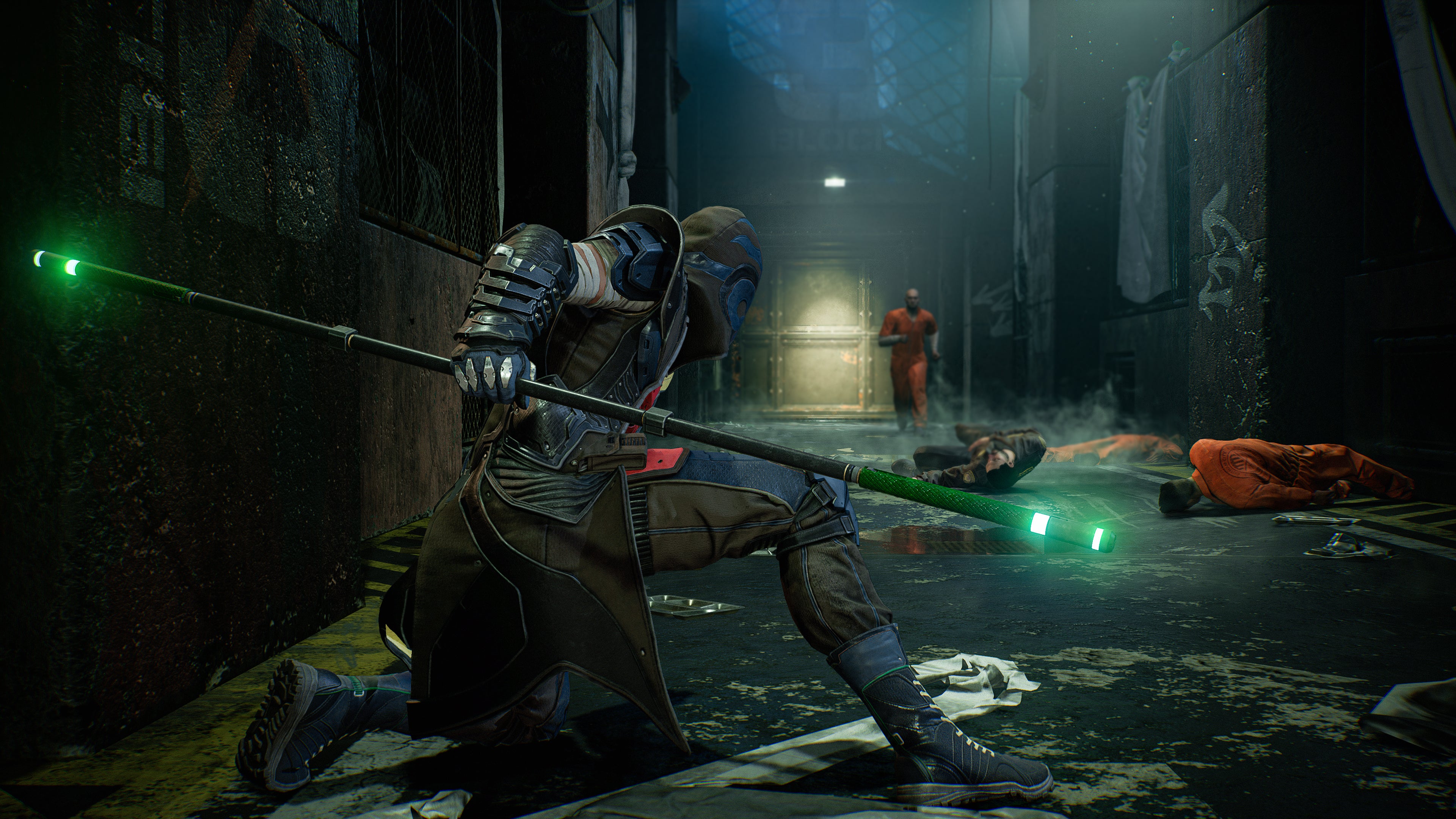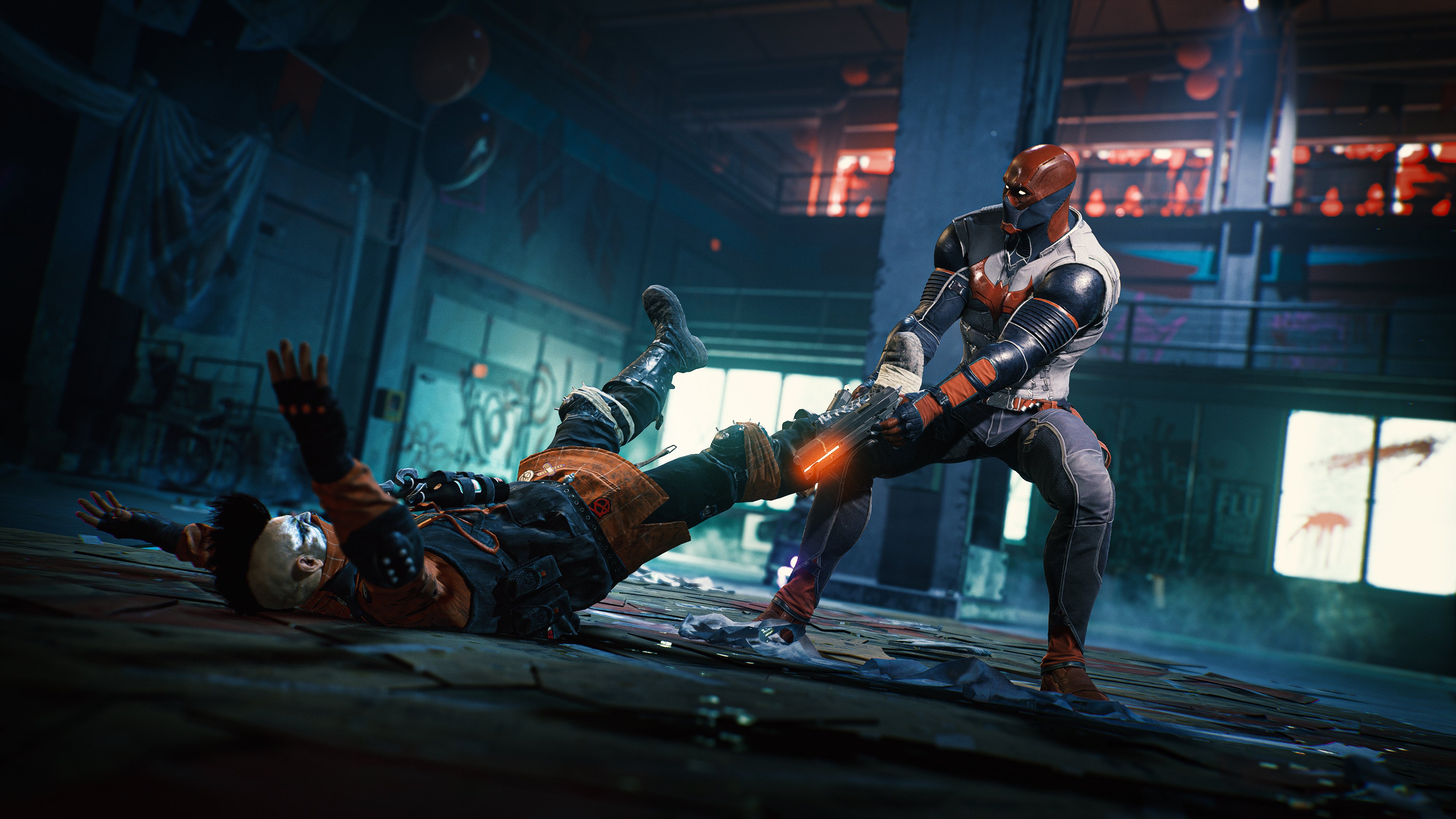It’s faint praise, and I’m loath to be too harsh on Gotham Knights when we’re still a few weeks away from launch. But at the moment it’s underwhelming, and underwhelming in terms of real substance, rather than technical performance - it looks nice enough and ran without any hiccups while we played over streaming platform Parsec. What’s missing is a sense of conviction. The setup sees you making a base of the Belfrey, a clock tower hideout that’ll be familiar to series fans, where you can mooch about and briefly chat with the other characters, swap between them, and launch missions or an exploration of the open world of Gotham City. Gotham looks quite good, but also a little muted next to the Gotham of Rocksteady’s Arkham games - especially Arkham Knight - where that glorious, gothic maximalism is replaced with more of a mediumalism. The city’s deep blacks seem more like faded browns, the rain doesn’t fall as hard, there’s no sense of sharpness, rankness, no distinctive air of criminal filth and grime, and with a kind of unnerving clarity to it all, like an old game that’s been visually “remastered” by an AI, its atmosphere lost without its textured fog. The same goes for its combat. Gotham Knights leans more heavily into the RPG tendencies here, with the typical three skill trees (although I didn’t really get the distinctions between each) and points to distribute when levelling up. This may be one cause of the problems. In the later-game mission, combat had a bit of a punch, with some kind of sparkly purple elemental damage popping out on hit, but earlier on it felt weak, almost insipid. Where the Arkham Batman would land punches with the crunch of a sledgehammer, flowing from one bone-shattering thwack to the next, in Gotham Knights they’re delivered with a kind of unintentional delicacy, each roundhouse like a fly bumping into a window. The system itself, I’d suggest, is the other part of the issue. Gotham Knights’ combat relies on a kind of rage metre in the bottom-right of the screen. Landing a series of hits builds up a bar and, when it’s full, you can use an ability. But this means every enemy, even the weakest, seems to take a dozen feather-tickle punches to go down, their resilience allowing you to fill that ability bar - and then the abilities don’t do much either. One, with Batgirl, allowed me to unleash a flurry of attacks for instance, and so I’d fill my bar by battering grunts and then save the ability for a heavy - normally an abnormally gigantic human - but even that wouldn’t take them down. So the result is a dozen light attacks, followed by another, more stylish flurry of light attacks. Then several more light attacks. All of these are delivered by mashing X, or holding it for a heavier one (a heavy attack for these heroes feels just about as strong as one Batman punch). It doesn’t feel great. Some of those skills are slightly more interesting. At one end of the scale, early-game Red Hood was pretty dire, peppering enemies with several bullets, or several more bullets. At the other, late-game Robin would use a kind of electrified dash, or spin his pole like a propellor and charge about the room briefly. That leads to another slightly underwhelming aspect though, which is the way the characters loosely fit into classes. Red Hood, who used to be a Robin, is a unit and likes to punch stuff - but mostly attacks with auto-aiming guns. Batgirl, who is Barbara Gordon, is good at techie things, but no opportunities to use any tech arose in the preview. Robin is good at sneaking, but Gotham Knights’ stealth, from the brief section I played, didn’t really materialise at all. I’d enter a large, two-level room with a secondary objective of performing several stealth take-downs, but without the wider, multi-path level design of the Arkham games, there’s very little room to manoeuvre. Two of the first guards are right in your way, and also on a ledge right in front of a dozen other enemies. With little by way of typical stealth-design tools - indicators for where enemies are looking, equipment of your own, or much in the way of systemic reactions to sound and light - and no escape routes, getting detected was hard to avoid and impossible to undo. Your options are to restart that section of the level, or lead a horde of enemies around a corner to a dead end and slowly take them down one by one. Part of this could just be the nature of the preview - stealth in particular is one of those things you build an understanding of, as you spend time with a game and learn its rules, and your capabilities - but it wasn’t a promising experience. That’s especially true when you consider the layout mirrored any simple, early-game setup from an Arkham game - a raised perimeter with some ledges to perch on, and a lower area with enemies milling about for you to jump down to and vanquish. Where Gotham Knights can recover some ground is with its Batman lore. There are plenty of returning favourites. Harley Quinn was our late-game boss, where she’d used a radio signal to brainwash some average-Joe citizens into rioting (one yelled “I BELIEVE IN Q!”, which earned a bleak laugh from me). The Penguin’s here, as is Alfred and the Court of Owls, and more I’m not allowed to mention. The dynamic between the four heroes was a little clichéd, mostly revolving around hot-head Red Hood wanting to shoot things and the others saying maybe not. But there’s potential, especially with a story centred on new beginnings for the city, and the necessity for growth amongst its core group (who also get some fun outfit changes later in the game). That’s also the problem though, and comes back to the main point with Gotham Knights at this early stage. Its heroes have a bit of an inferiority complex, constantly talking about Batman and his absence, how important he was, how hard it’ll be to live up to him but how darn it they’ve gotta try. It might be trite, but it’s really the same inferiority complex mirrored by the game, which feels as though it’s trying to replace Batman by recreating him in aggregate, across four characters with individual skills that add up to his. The result is a game that constantly reminds you how good Batman was, and how nothing else can compare. There’s an obvious solution: put Batman in it - and let it feel like Batman, too.





